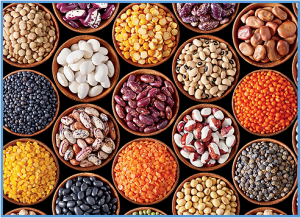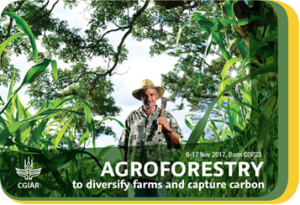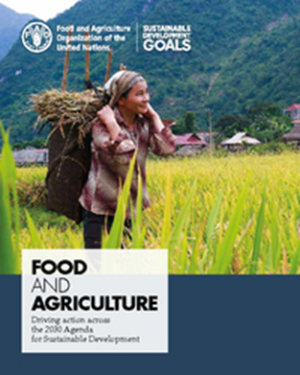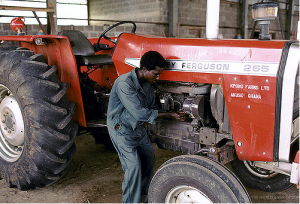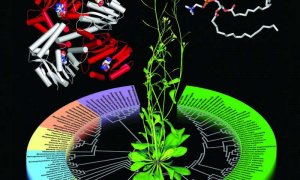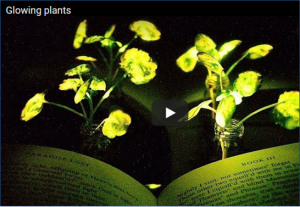The CGIAR Research Program on Grain Legumes and Dryland Cereals Agri-food Systems (CRP GLDC) launched focused on increasing the productivity, profitability, resilience and marketability of critical and nutritious grain legume and cereal crops grown in Sub Saharan Africa and South Asia. This second phase CRP combines the lessons learned from three phase 1 CRPs: Dryland Cereals, Grain Legumes, and Dryland Systems. CRP-GLDC is a Research for Development investment of US$413 million over five years (2018-2022).
HarvestPlus is proud to announce it has been awarded $15 million as one of the finalists in the John D. and Catherine T. MacArthur Foundation’s 100&Change competition. This global challenge has sought bold solutions to critical problems of our time, and this award recognizes HarvestPlus for its work on a solution to one of the world’s greatest problems—hidden hunger.
Agriculture is at the intersection of three major challenges in the context of climate change, achieving food security, adapting to the impacts of climate change and reducing emissions. Because of this, agriculture has been recognized by countries as a key priority for climate action and is now being discussed at the UNFCCC Climate Change Conference in Bonn, Germany. Agriculture needs to produce 60 percent more food by 2050 to feed a growing population, and these production increases need to occur even as the impacts of climate change are becoming evident in crop, livestock and fisheries systems globally.
On a small hill outside of Grand Junction, CO, the sun beats on dry earth, and human bodies lie face up amid low sagebrush. Inside each corpse, on it, and beneath it, a rich ecosystem of bacteria, nematodes, and other microbes flourishes. As these tiny forces of nature—constituents of the postmortem microbiome—steadily decompose the remains, scientists document their every move.
oxa CMS is a cytoplasmic male sterility (CMS) line that has been widely used in the production and cultivation of stem mustard in the southwestern China. In this study, different CMS-type specific mitochondrial markers were used to confirm that oxa CMS is distinct from the pol CMS, ogu CMS, nap CMS, hau CMS, tour CMS, Moricandia arvensis CMS, orf220-type CMS, etc., that have been previously reported in Brassica crops.
Our planet faces multiple and complex challenges in the 21st century. The 2030 Agenda for Sustainable Development commits the international community to act together to overcome them and transform our world for present and future generations. Focusing on food and agriculture, investing in rural people and transforming the rural sector - actions associated with the holistic vision of SDG2 - can speed progress towards all 17 Sustainable Development Goals (SDGs).
Agricultural mechanization—the use of machine and animal power for plowing, threshing, harvesting, and other tasks—is playing an increasingly important role in Africa’s rural transformation. Rapid urbanization puts African farming systems under pressure to produce more with less labor, as more people migrate to cities or engage in rural non-farm work. In response, farmers in many parts of Africa have exhibited increased demand for mechanization.
Recent findings by researchers at Washington University in St. Louis may aid in the development of therapies to treat parasitic infections, including malaria, and may help plant scientists one day produce hardier crops. The research team's work is published in the Dec. 29 issue of the Journal of Biological Chemistry. Choline is an essential nutrient that humans get from certain foods, including eggs, meat, leafy greens and nuts. The human body converts choline into phosphocholine (pCho), which it in turn converts into (among other essential building blocks) phosphatidylcholine (PtdCho), a component of cell membranes. Plants, however, can't acquire the nutrient from the environment and so must synthesize pCho from scratch.
Dr. John M. Schiller, 72, passed away in Brisbane, Australia, on Monday (18 December) of suspected heart failure. For the International Rice Research Institute (IRRI), he was the team leader and research programmer of the Lao-IRRI Project for 11 years (1990-2001). He had spent 30 years of his life working in Southeast Asia, primarily in Thailand, Cambodia, and Laos.
Researchers at the Massachusetts Institute of Technology (MIT) have engineered plants that give off dim light. The MIT team used luciferase, the enzyme that gives fireflies their glowing light. Luciferase acts on the molecule luciferin, causing it to emit light. Another molecule called co-enzyme A helps the process by removing a reaction byproduct that can inhibit luciferase activity.


 Curently online :
Curently online :
 Total visitors :
Total visitors :
